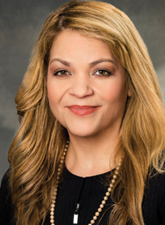Don’t forget higher education’s economic contributions

Institutions of higher education continue to be economic drivers, not just in Westchester County, but across New York state.
Private not-for-profit colleges and universities in New York accounted for $88.8 billion in economic activity with approximately $2.2 billion spent on construction, buildings and infrastructure, according to a 2018 report from the Commission on Independent Colleges and Universities (CICU) in New York.
The CICU found that 25 college and university campuses in the Hudson Valley generated $5.2 billion in economic activity, supporting more than 26,000 jobs.
Pace University plays an important economic role in this region. A report released by Pace showed that its two Westchester campuses, one in Pleasantville and the Elisabeth Haub School of Law in White Plains, contributed nearly $360 million to the regional economy and were responsible for more than 1,500 jobs in 2017, the latest year for which data was available.
If you take a ride along Bedford Road in Pleasantville, it might not be apparent that in recent years Pace University has undergone a transformation on its 200-acre campus.
Pace has invested hundreds of millions of dollars in campus infrastructure, building a new student center, residence halls and athletic fields along with other amenities to enhance the student experience.
For every dollar an institution like Pace, a business or a nonprofit spends on goods and services, more are circulated throughout the economy, creating income and opportunities for construction workers, architects, engineers, food vendors and any number of businesses large and small.
Over the last seven years, Pace University spent about $232 million on campus revitalization. When the multiplier effect is considered, such work generated a nearly $429 million increase in economic output, $140.5 million in earnings and 2,660 jobs. These are jobs with solid incomes that support families throughout Westchester and the region.
Far too many people underestimate the economic strength of not-for-profits such as hospitals, social service agencies and institutions of higher education. Too often they are viewed as non-taxpaying entities that are a drain on community resources.
The numbers, however, tell a much different story. In Westchester not-for-profits are the largest employment sector and all signs show they will remain an integral part of the economy.
Business and municipal leaders recognize these contributions and often acknowledge the economic, educational and cultural assets are resources for the community.
We have consistently created opportunities for students through our educational and degree programs, and have successfully set graduates on the course of upward economic mobility. Pace is ranked the No. 1 private, four-year college in the nation for upward economic mobility by Harvard University”™s Opportunity Insights.
And our growth is felt far beyond our classrooms and our campus. Consider the following statistics:
Ӣ Students from both campuses in Westchester spent $35 million off-campus at area businesses. In Pleasantville, students spent $24.3 million on off-campus housing, food, entertainment and retail, generating $42.7 million in overall economic activity, $11.1 million in earnings and supported 359 jobs.
Ӣ Sporting events and camps on campus drew 142,487 attendees who spent $5.4 million at local restaurants, hotels and retail stores.
Ӣ Pace withheld more than $42 million in FICA and federal taxes, $9.5 million in state and local taxes from all of its New York City and Westchester employees, paid $522,220 in the Metropolitan Commuter Transportation Mobility (MTA) tax and paid nearly $1.5 million in property taxes.
Ӣ Pace students contribute 21,000 volunteer hours to local organizations each year.
Ӣ Pace has about 150,000 alumni with more than 65% of Pace alumni living in the New York metropolitan area.
Vanya Qui̱ones is the provost of Pace University. She holds a bachelorӪs degree in biology, a masterӪs in cell biology and a doctorate in neurobiology and physiology. She can be reached at vquinones@pace.edu.